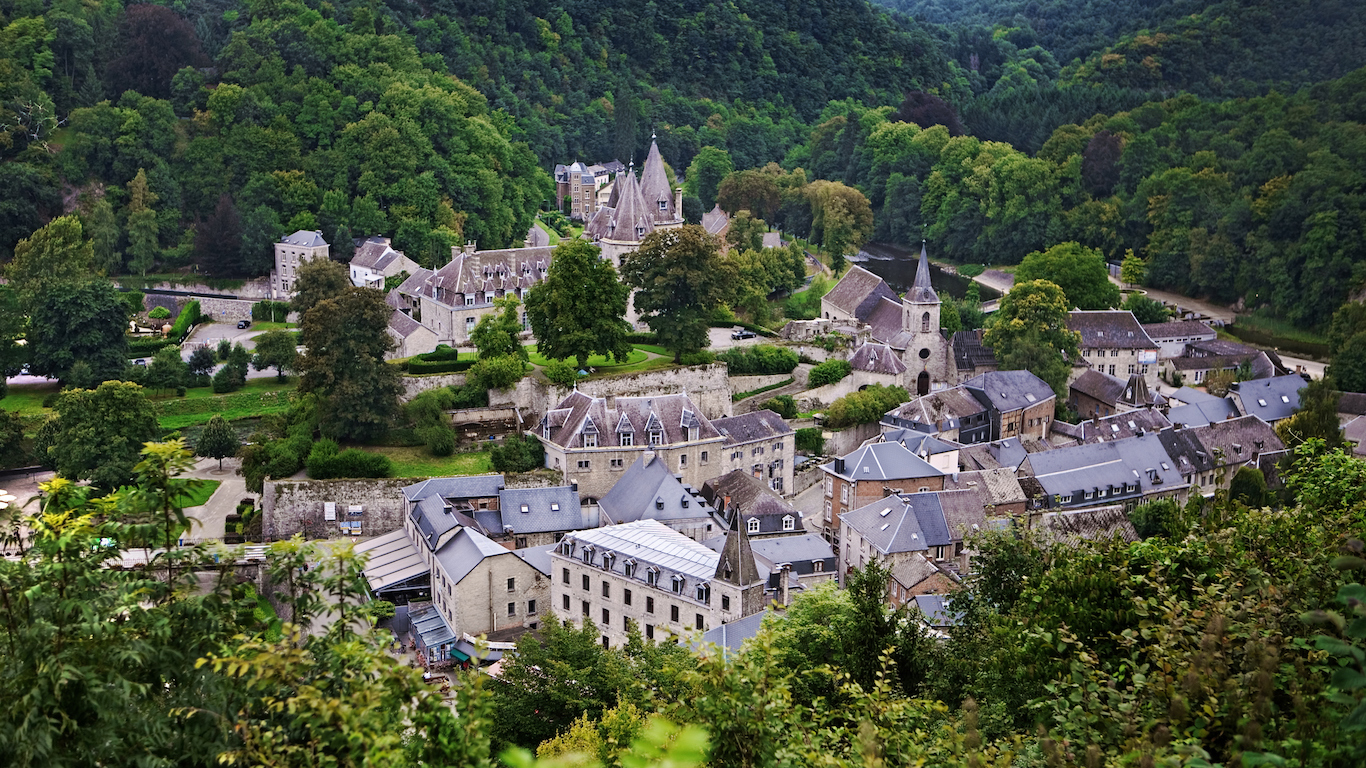
What is a city? How is it different from a town? Is it a question of population, facilities, public services, government? Merriam-Webster defines a city as “an inhabited place of greater size, population, or importance than a town or village.” But as Ammar A. Malik, a senior research associate at the Washington, D.C.-based Urban Institute, puts it, “[T]he basic question of what constitutes a city is often defined inconsistently…” That’s putting it mildly. One person’s city is another person’s town, and vice versa.
Local tourist authorities maintain that Hum, Croatia, is the smallest city in the world, for instance, but it has no more than 20 or so residents and only a couple of streets; we’re not buying it. On the other hand, Bronkhorst, in the Netherlands, has a mere 155 inhabitants, but a 15th-century ruler designated it as a city, and so it remains one today.
The distinction can be an important one: The 1659 Treaty of the Pyrenees formalized the border between France and Spain, ceding all the borderline villages to the former country. The citizens of one town, Llívia, protested that theirs was officially a city, so it remained part of Spain — though one today completely surrounded by France.
Given the difficulty of defining “city” and the fact that population figures, even official ones, often disagree or are outdated, we gave up trying to identify the smallest actual cities in the world. Instead, we’ve assembled an assortment of interesting tiny cities from around the globe, from Asia to the Americas, the Caribbean and the Mediterranean. Not surprisingly, many of these are island cities, their size perhaps limited by geography. Some are the capitals of their nations. One is actually a city and a nation (or at least a state). They range in population from 155 to 22,111 and in area from 0.01 to 266.4 square miles. Are they all really cities? Yes, one way or another.
Click here to see the 25 tiny cities around the world
Click here to see the 50 largest cities in the world
24/7 Wall St. drew on population data from the United Nations Statistics Division, World Population Review (whose data is based on the UN’s annual World Population Prospects), City Population (a data aggregator used by the Encyclopedia Brittanica, the Europe World Year Book, and the answer engine Wolfram Alpha, among others), and the environmental information website Mongabay, as well as pertinent official city, regional, or country websites to choose 25 interesting tiny cities. In many places, government censuses are conducted only once every 10 years, and the most recent ones date from 2010 or 2011. Rather than use more recent but unofficial numbers, we have reported the census counts. In all cases, the year from which figures date has been noted. Those from 2017 and 2018 are primarily population estimates or projections.
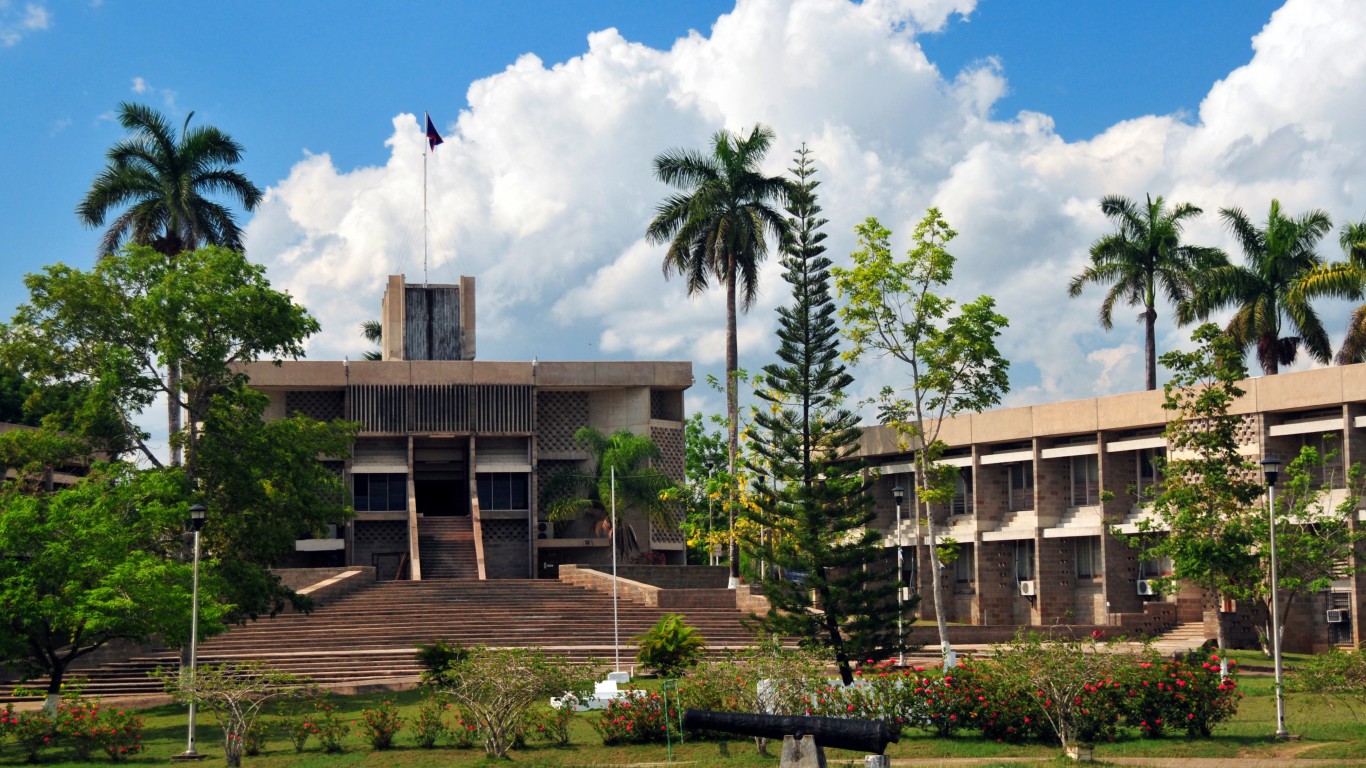
1. Belmopan, Belize
> Population: 20,621 (2016)
> Area: 12.66 square miles
Belmopan, the capital of Belize, is a comparatively new city, built after Hurricane Hattie destroyed much of the former capital, Belize City, in 1961. It is the smallest capital city in the Americas in terms of population, but it is growing as many Belizeans are moving from the old capital to the new, driven out by crime, an insufficient infrastructure, and a lack of land for new housing.
[in-text-ad]
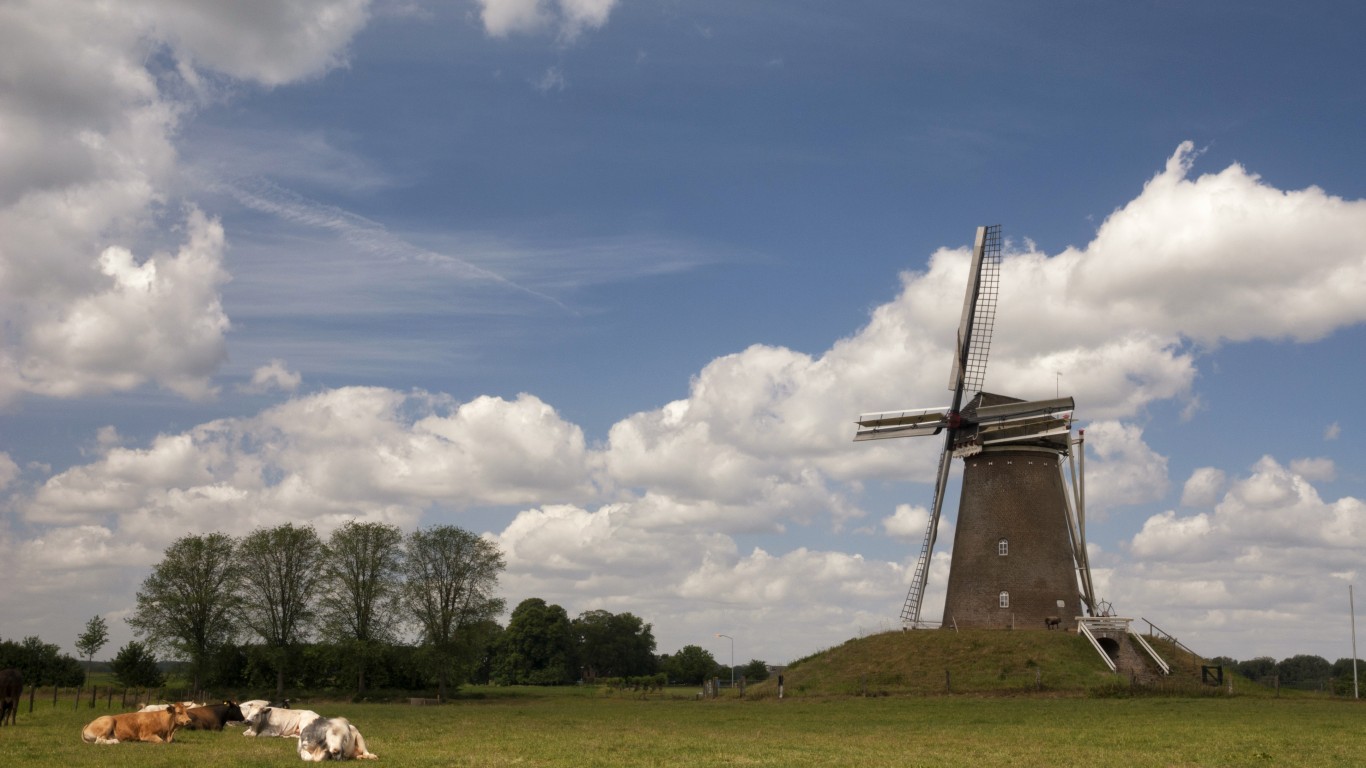
2. Bronkhorst, The Netherlands
> Population: 155 (2017)
> Area: 0.01 square miles
Founded as a fortified agricultural settlement circa 1000 A.D., this tiny Dutch city was granted city status in 1482I. Confusingly, it is today one of multiple urban centers forming the municipality of Bronckhorst (note the extra “c”). The city boasts 38 national monuments, including a Jewish cemetery and an old mill.
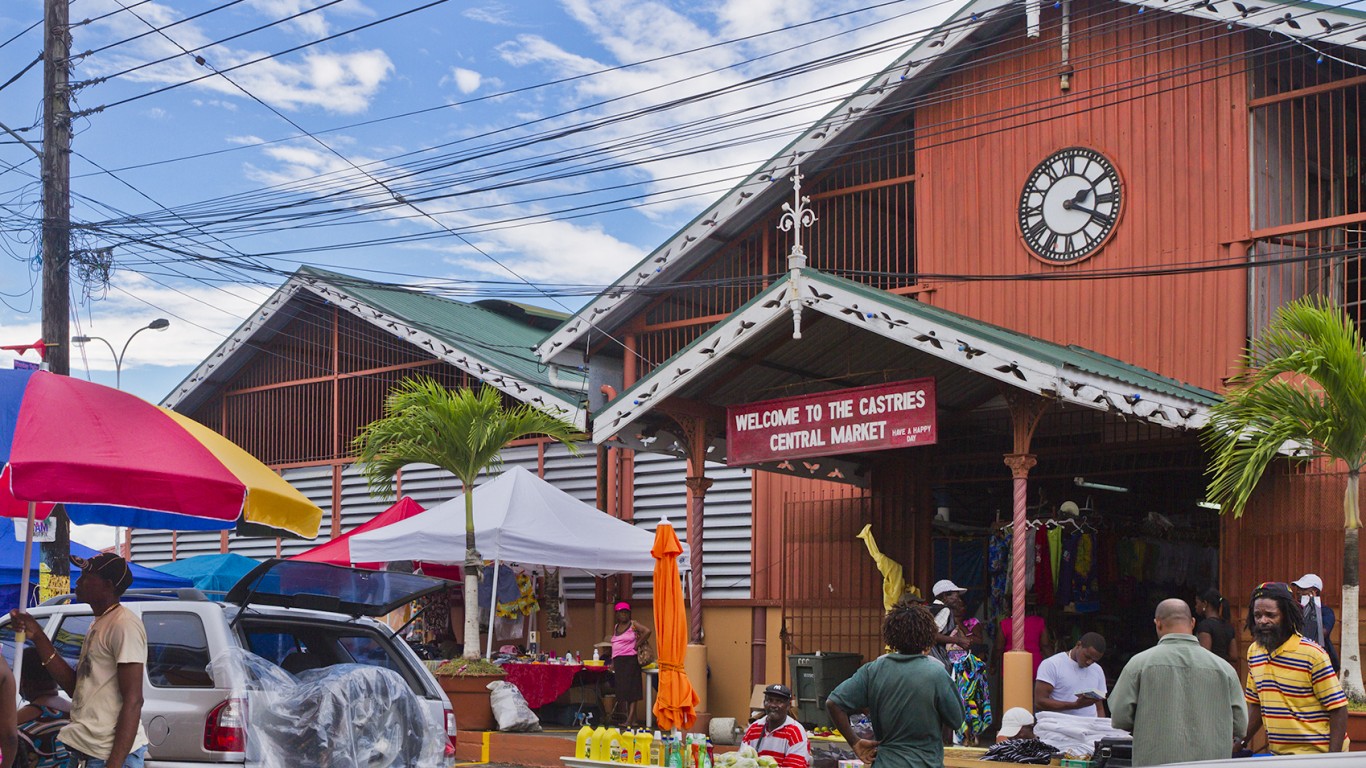
3. Castries, Saint Lucia
> Population: 22,111 (2010)
> Area: 30.50 square miles
Visitors to this Caribbean capital might think it has a larger population than it really does as it’s a popular cruise ship stop and thousands of visitors flock in weekly for shopping and dining. Three-quarters of the commercial center was destroyed by fire in 1948 and was rebuilt to include examples of contemporary Caribbean architecture.
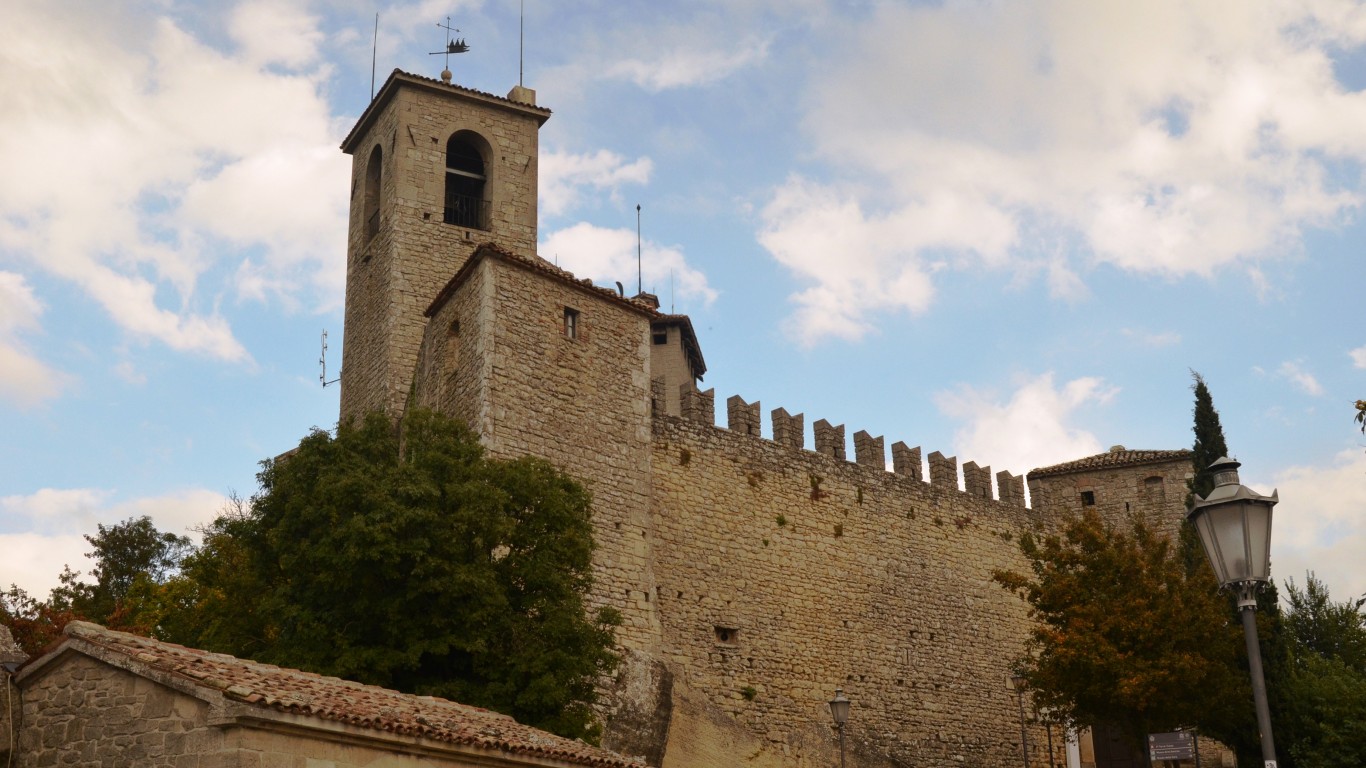
4. Città di San Marino, San Marino
> Population: 4,100 (2016)
> Area: 2.74 square miles
This tiny city sits in the middle of its eponymous microstate, which is completely surrounded by the northeastern Italian regions of Marche and Emilia-Romagna. Its mountaintop site is said to have been inhabited since prehistoric times. Medieval churches and other historic structures fill the town.
[in-text-ad-2]
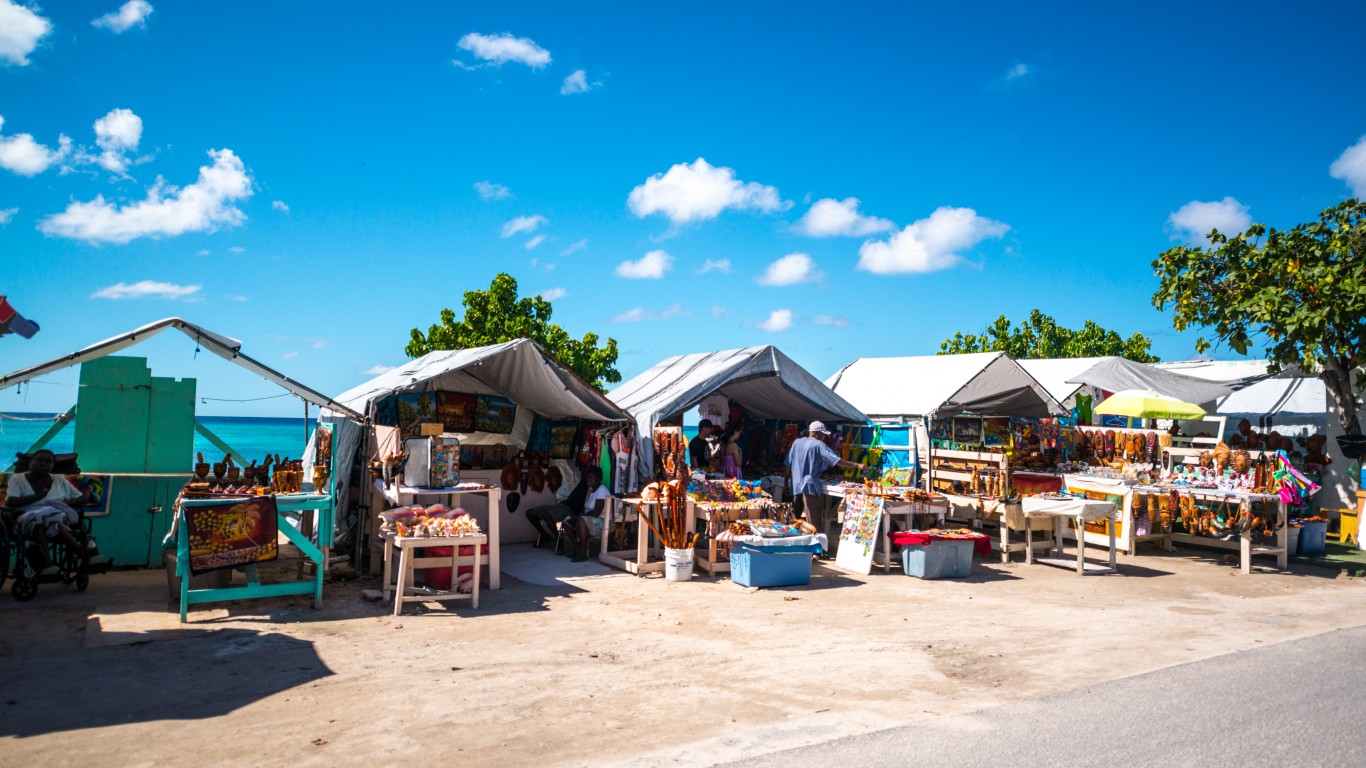
5. Cockburn Town, Turks & Caicos
> Population: 3,720 (2018)
> Area: 6.70 square miles
It may be called a “town,” but the capital of Turks and Caicos — also sometimes called Grand Turk, after the name of the country’s main island, on which it is situated — has been the seat of government for the islands since 1766. It became the home of an important sea salt industry in the mid-1700s, and today, with the rest of Grand Turk, survives primarily on tourism, financial services, and seafood exports.
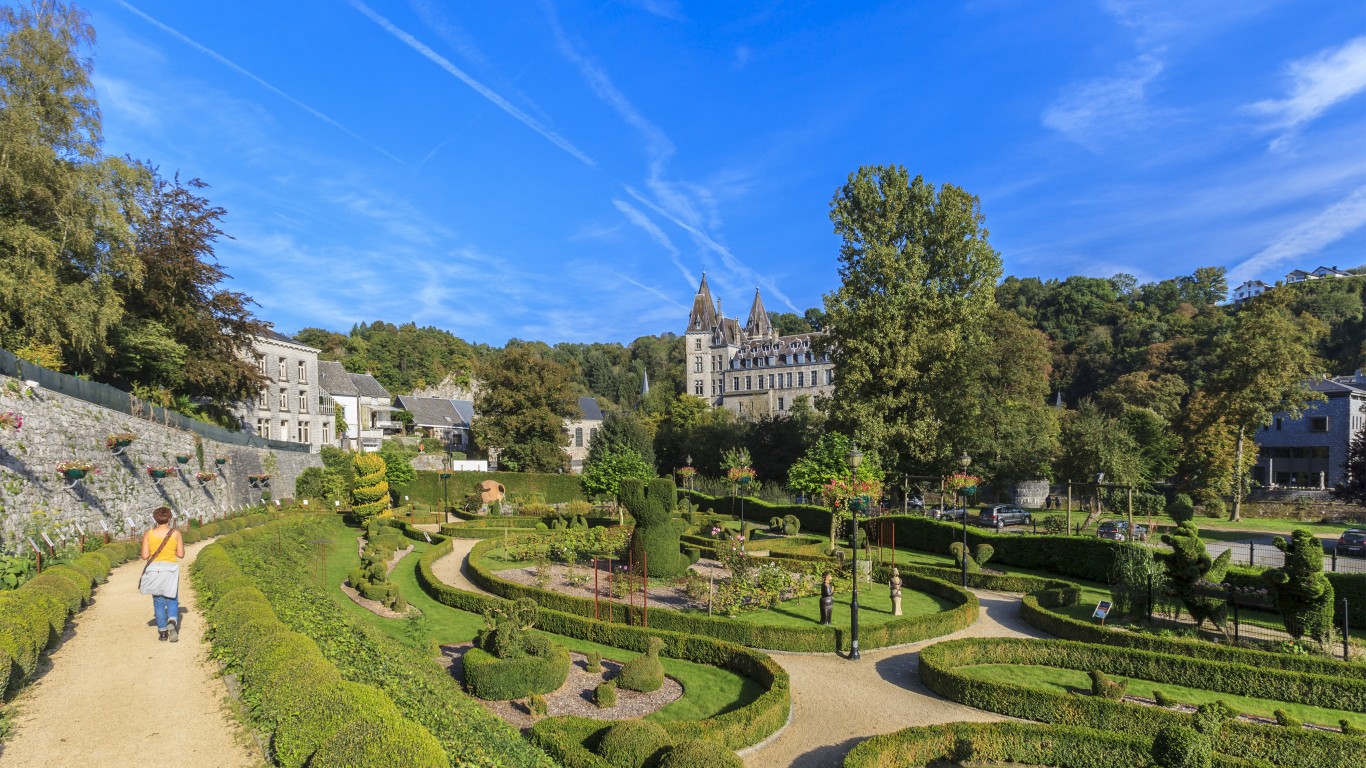
6. Durbuy, Belgium
> Population: 11,374 (2018)
> Area: 60.62 square miles
This charming little town in the Ardennes has long billed itself as “the smallest city in the world.” It has always been village-sized but was officially elevated to the rank of city by John I, Count of Luxembourg, in 1331. That notwithstanding, there are a number of smaller cities around the world today (see elsewhere in this list). Besides its fairytale castle and huge topiary gardens, it is well-known for the quality of its restaurants and farmhouse breweries.
[in-text-ad]
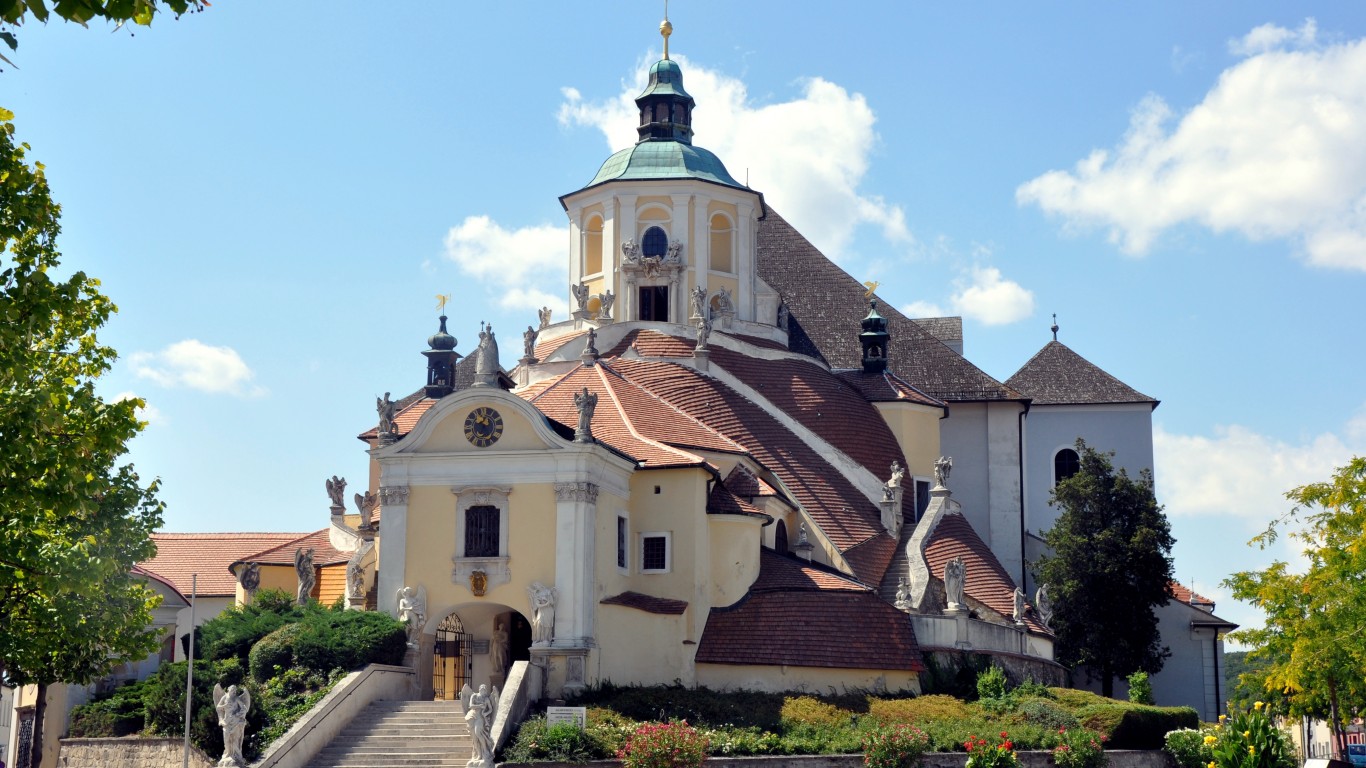
7. Eisenstadt, Austria
> Population: 14,339 (2017)
> Area: 16.53 square miles
Composer Joseph Haydn is the big draw here. He lived in this bustling small city, the capital of the state of Burgenland, for several years in the mid-18th century. His house is now a museum, and the herb garden he planted, still thriving, is open to the public. He is buried in Eisenstadt’s Bergkirche, or “hill church.”
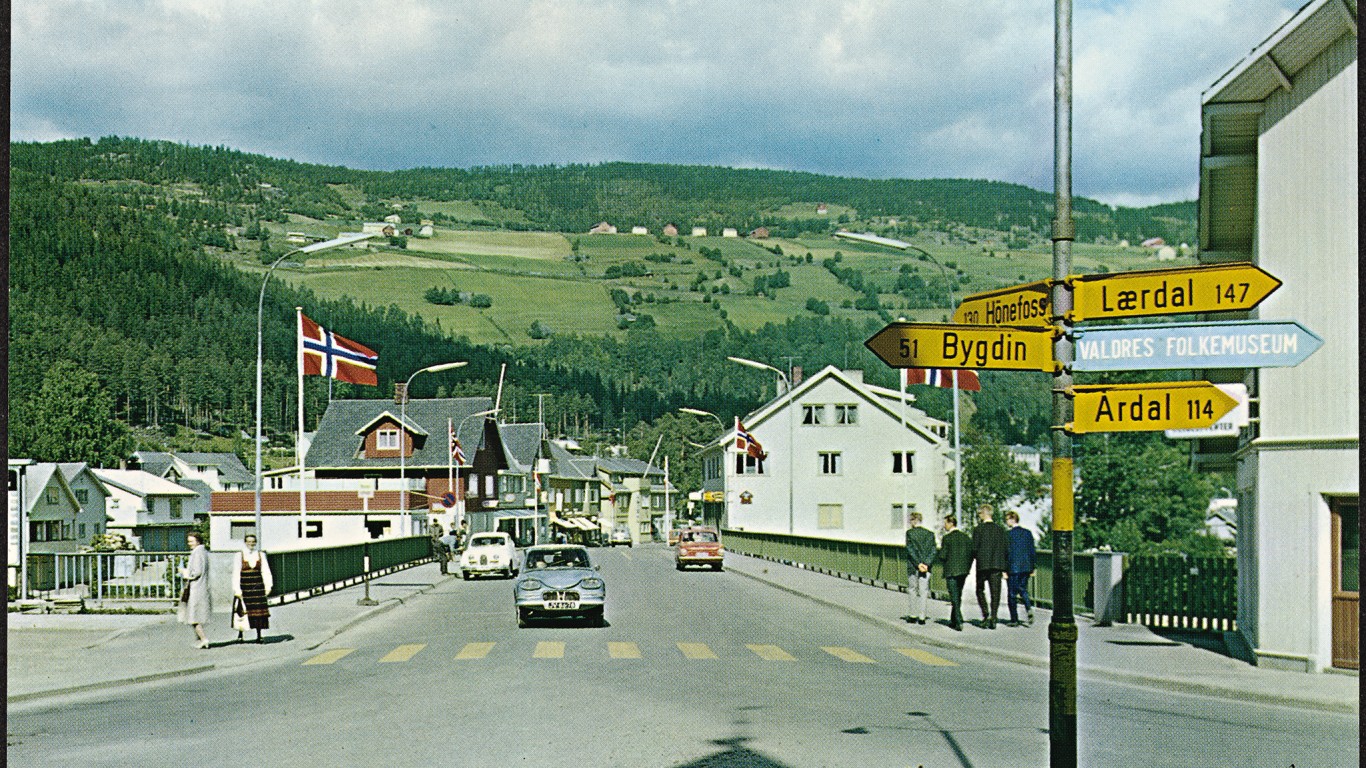
8. Fagernes, Norway
> Population: 1,936 (2017)
> Area: 0.78 square miles
The district of Valdres in south-central Norway is a popular area for outdoor sports, including hiking, cycling, fishing, and both Alpine and cross-country skiing. Fagernes, the region’s capital, is a jumping-off point for many of these activities. Despite its small size, Fagernes was given city status by the local administrative authorities in September 2007 to coincide with the 150th anniversary of its founding.

9. Flin Flon (Manitoba/Saskatchewan), Canada
> Population: 5,592 (2011)
> Area: 6.27 square miles
Incorporated as a city in 1970, Flin Flon was probably named after Prof. Josiah Flintabbatey Flonatin, a character invented by the English science fiction writer J. E. P. Muddock. It’s an unusual municipality because, while the majority of its area and population are within the province of Manitoba, a small portion of both spill over the line into Saskatchewan. The city is jointly administered by officials from both provinces. Flin Flon was the site of Canada’s first official producer of medical marijuana.
[in-text-ad-2]
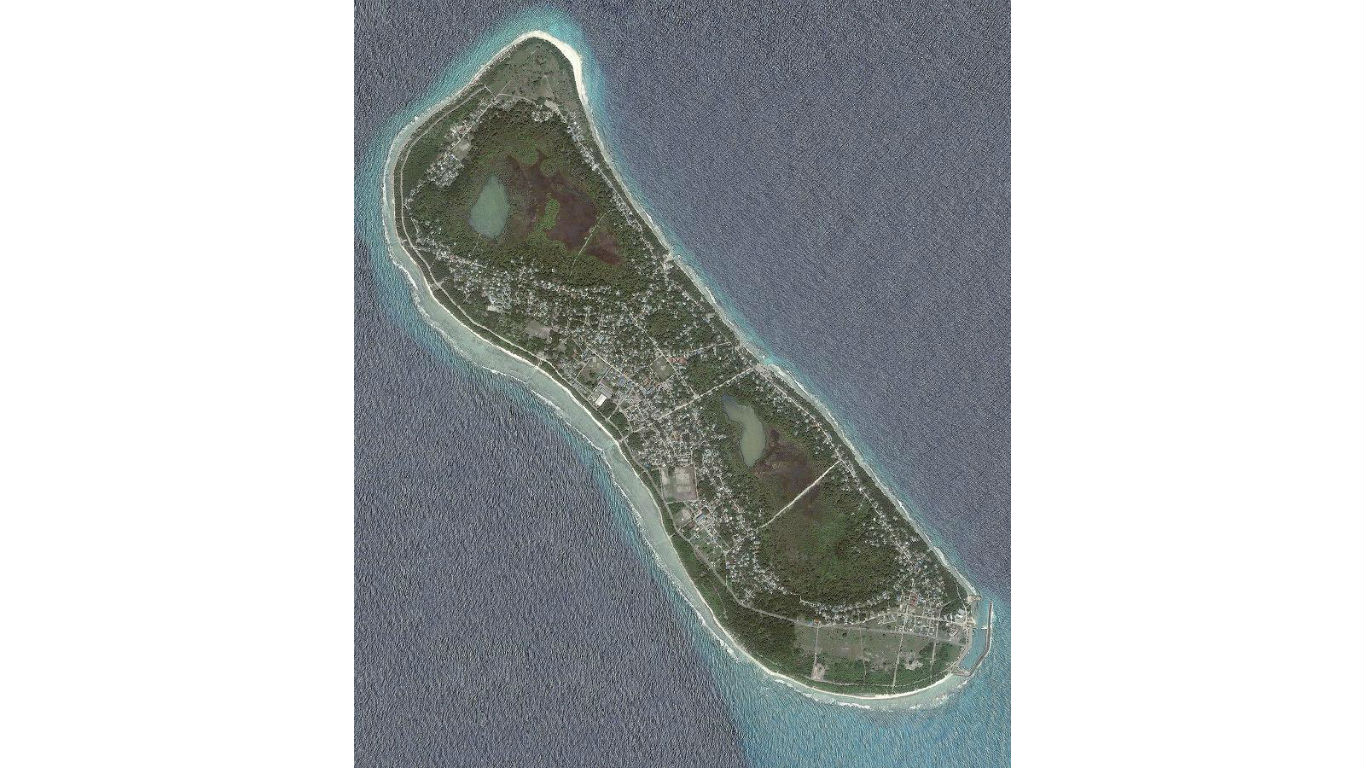
10. Fuvahmulah City, Republic of Maldives
> Population: 11,140 (2018)
> Area: 1.62 square miles
Fuvahmulah is both an island and a municipality. The latter was officially named the third city in the Maldives in 2016 (the capital, Malé, and Addu City were the first two). Visitors praise its friendliness and feeling of authenticity (as opposed to the vibe on more touristy islands), but the big draw here seems to be the opportunity to enjoy unspoiled woodlands, lakes, and beaches, as well as a new nature park.
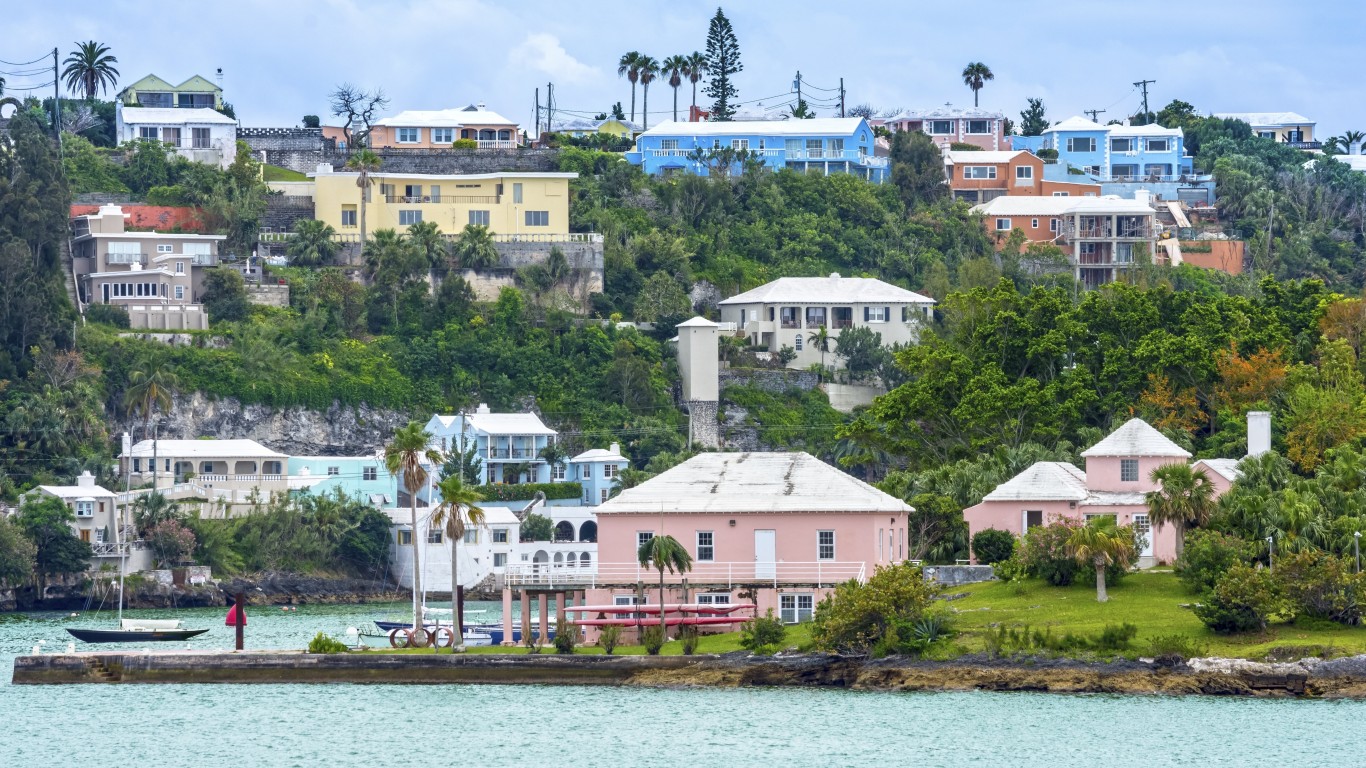
11. Hamilton, Bermuda
> Population: 854 (2016)
> Area: 0.27 square miles
Founded in 1793, Hamilton was named Bermuda’s capital in 1815, and despite its modest size, it was officially designated a city in 1897. A popular cruise ship destination, which accounts in part for the many shops that line its streets, Hamilton is also the restaurant and nightlife (such as it is) hub of Bermuda. Several small parks and museums are added attractions.
[in-text-ad]
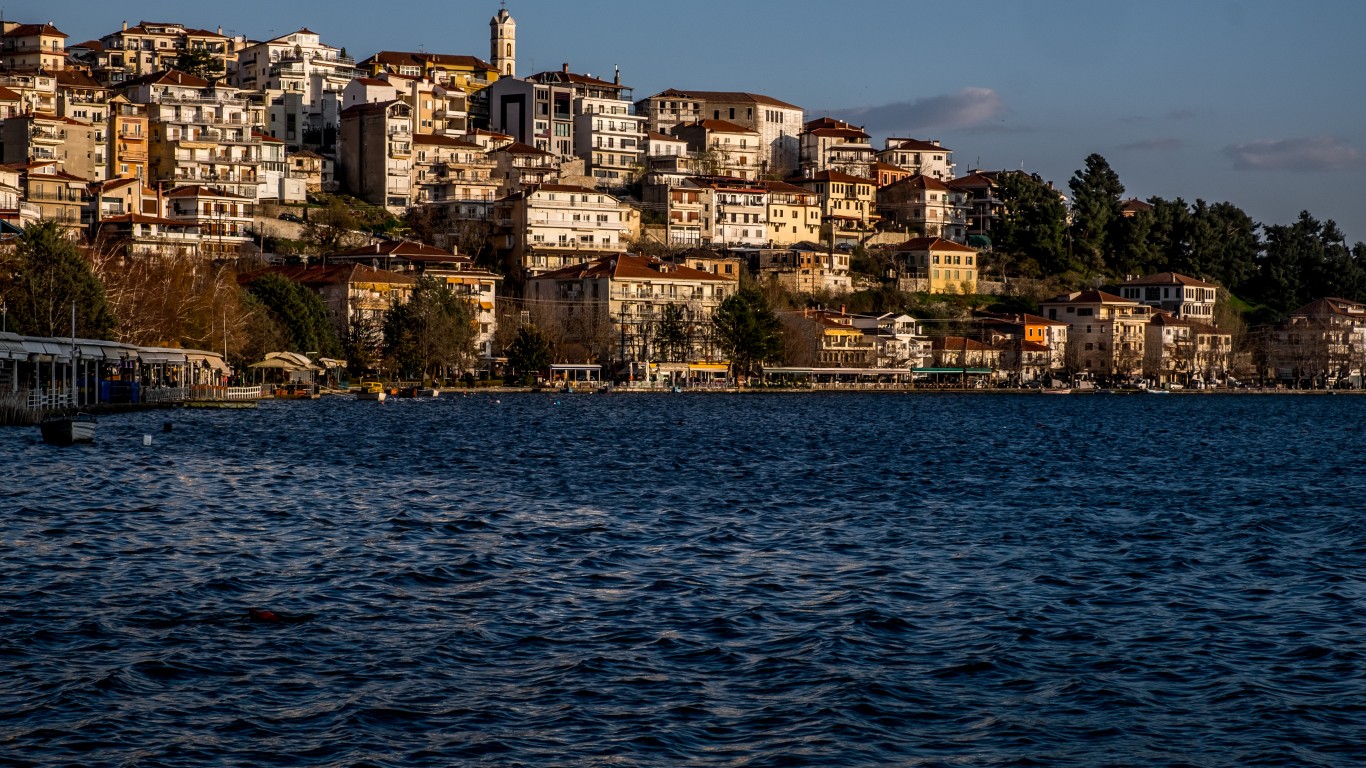
12. Kastoriá, Greece
> Population: 13,387 (2011)
> Area: 22.12 square miles
Located in far northern Greece, in the region of West Macedonia, Kastoriá has been a center of the fur garment industry since the Byzantine Era. The fur trade in the city is waning now, though, as demand for the furs from Kastoriá’s best customer, Russia, has declined. The city, which curves around tranquil Lake Orestiada, is home to more than 60 Byzantine and post-Byzantine churches and other structures.
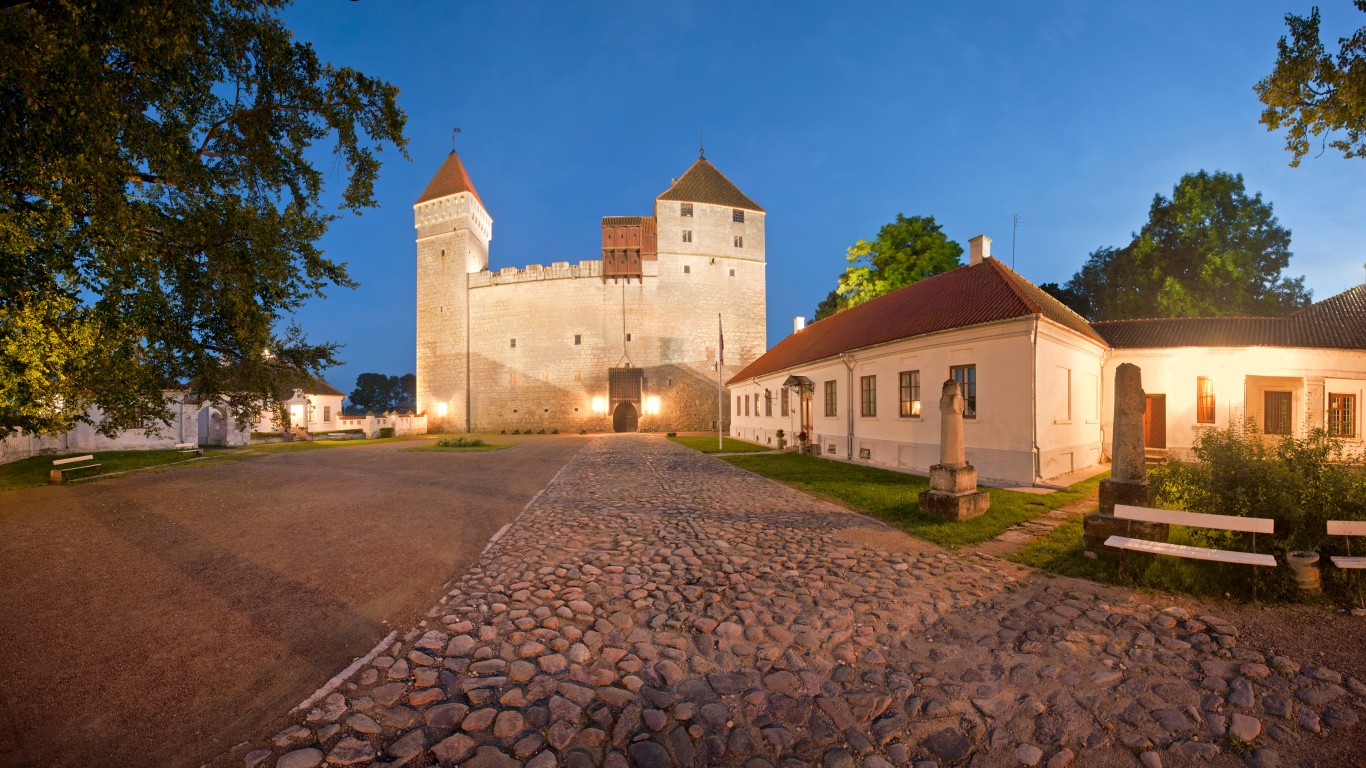
13. Kuressaare, Estonia
> Population: 13,276 (2018)
> Area: 5.98 square miles
Formerly called Arensburg, and known during the Soviet era as Kingissepa, Kuressaare became a city in 1563 when it was under Danish rule. A spa resort was established there in 1840, and others followed. Kuressaare remains known for its therapeutic mud baths and its mineral water, and it was named a Healthy City by the World Health Organization in 1998. The city is also near numerous national parks and nature preserves.
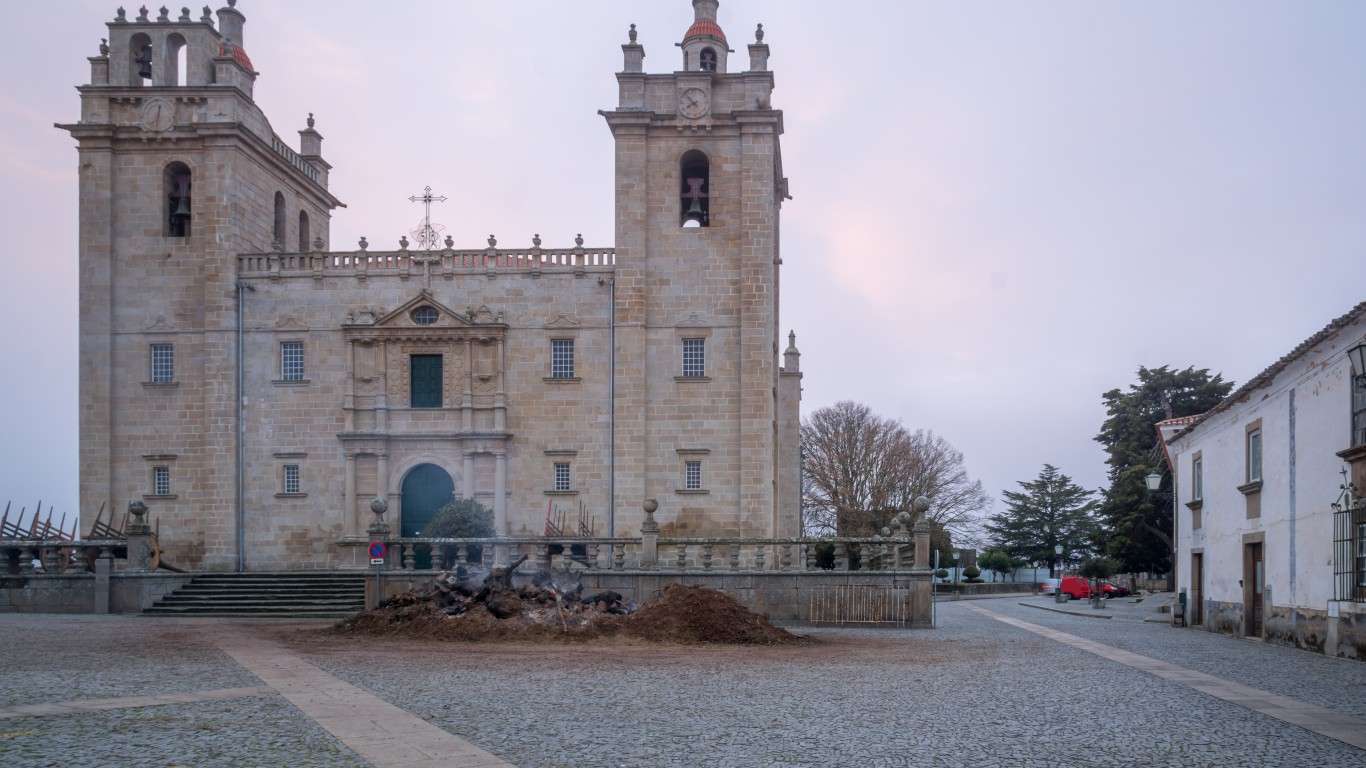
14. Miranda do Douro, Portugal
> Population: 2,085 (2011)
> Area: 1.35 square miles
A fortified city overlooking Portugal’s great wine river, the Douro, Miranda was given outsized importance in 1545 when Catholic authorities created a diocese there. The cathedral, which was begun seven years later and finished in the early 17th century, is one of the city’s main attractions, and views of the river and the surrounding landscape from the city walls are spectacular.
[in-text-ad-2]
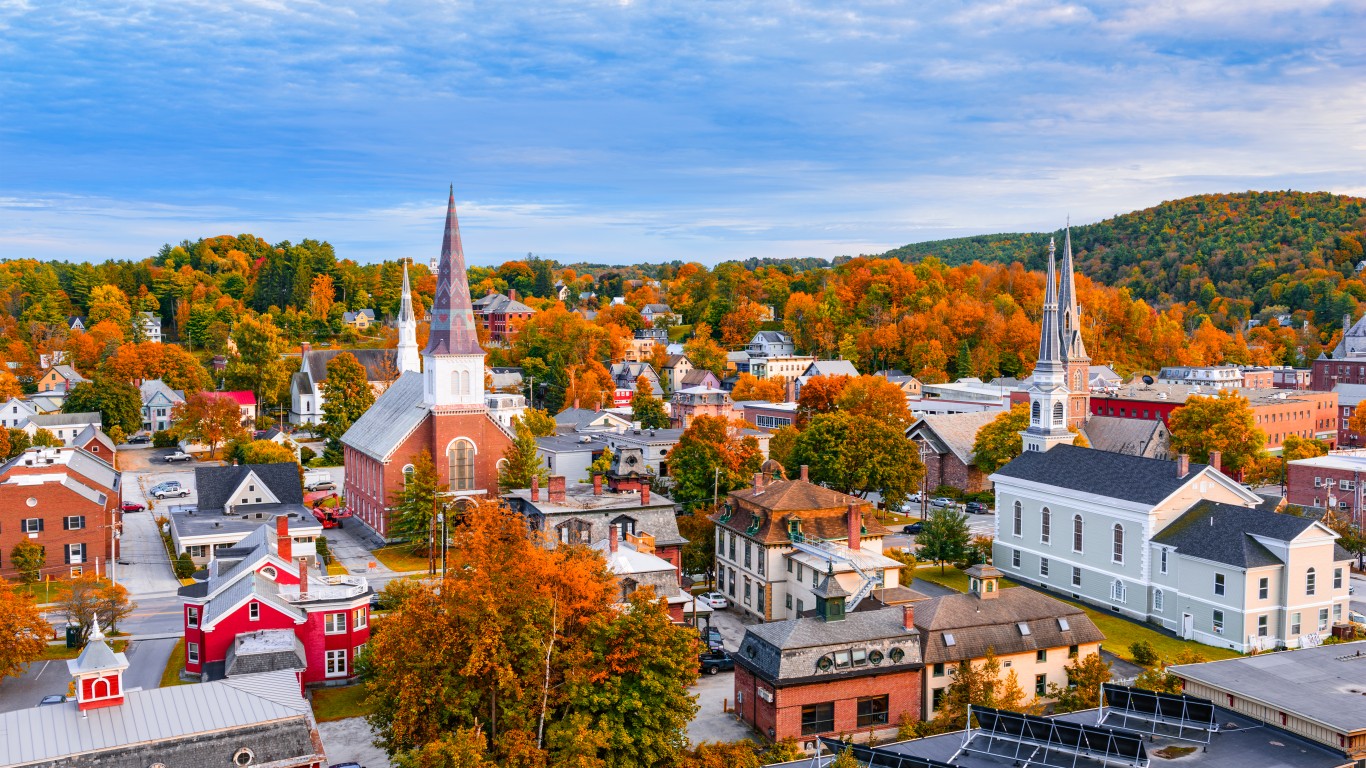
15. Montpelier (Vermont), U.S.A.
> Population: 7,662 (2016)
> Area: 10.27 square miles
The smallest state capital in the U.S. (Vermont’s largest city, Burlington, is more than five times its size), Montpelier was chosen as capital in 1805 for its central location and road access. It grew quickly after the railroad came to town in the mid-19th century, but growth slowed subsequently. Its 450-building Historic District demonstrates a variety of architectural styles from the 1800s, and the more modern downtown is full of shops and places to eat and drink.
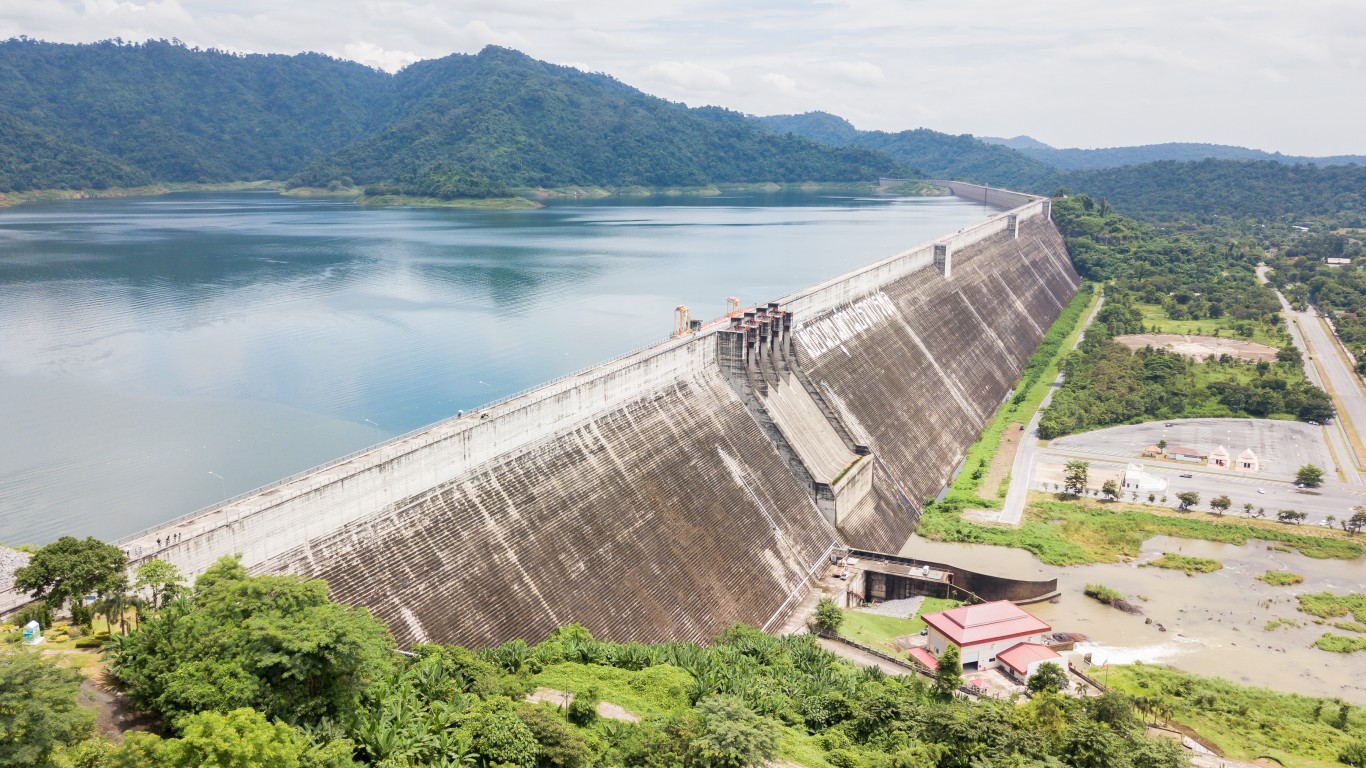
16. Nakhon Nayok, Thailand
> Population: 16,009 (2017)
> Area: 6.14 square miles
Nakhon Nayok, which may have been founded as early as the 11th century A.D., is the only major municipality in the province of the same name. “Nayok” is derived from the words “na,” meaning “rice paddy,” and “yok,” meaning “tax-exempt” — a reference to the fact that the local soil was so poor and the rice harvest so small that local farmers weren’t obliged to pay the usual rice paddy taxes. There are two notable temples on the banks of the river that flows through the city.
[in-text-ad]
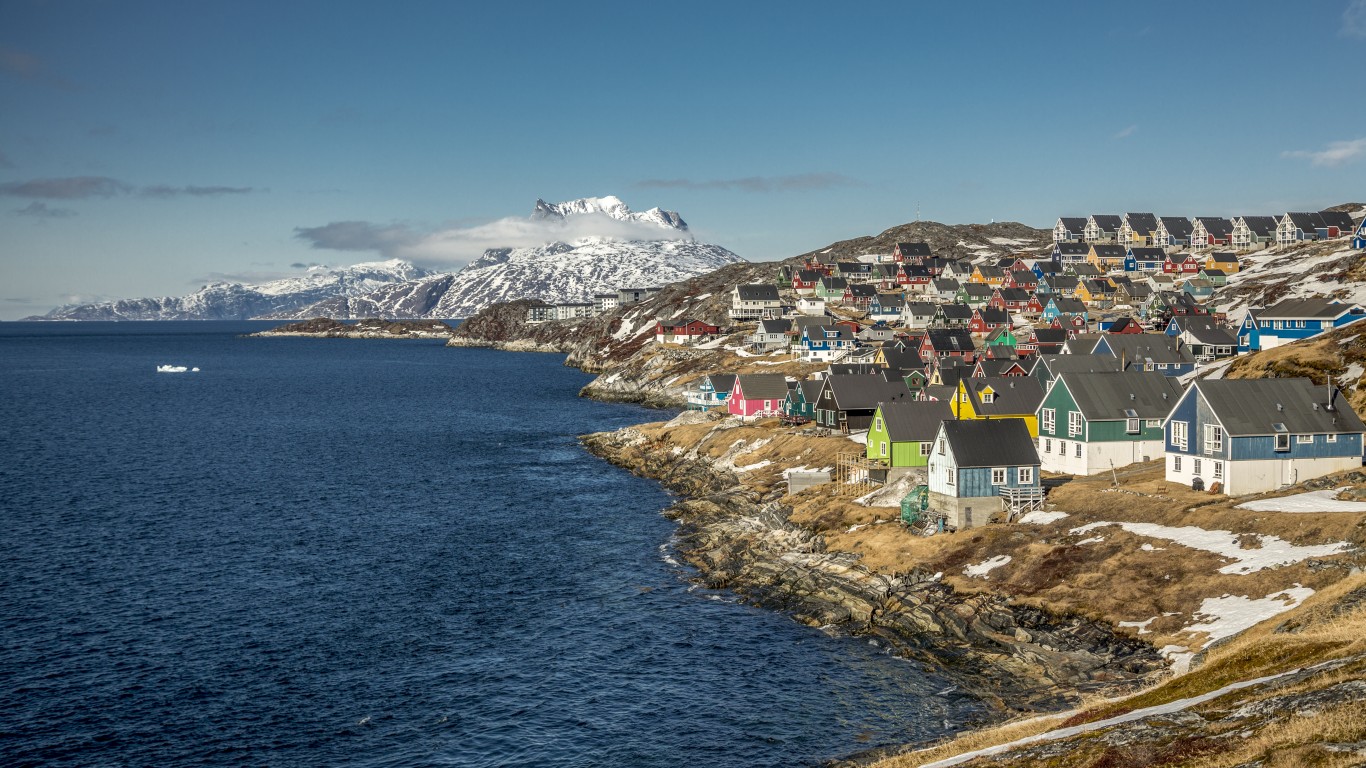
17. Nuuk, Greenland
> Population: 17,796 (2018)
> Area: 266.40 square miles
The capital of Greenland, founded in 1728, Nuuk is home to two museums, a wooden cathedral dating from 1849, and rows of colorful waterside houses. The 21-year-old Katuaq Culture Center attracts up to 100,000 visitors a year for its film screenings, theatre performances, and art exhibitions.
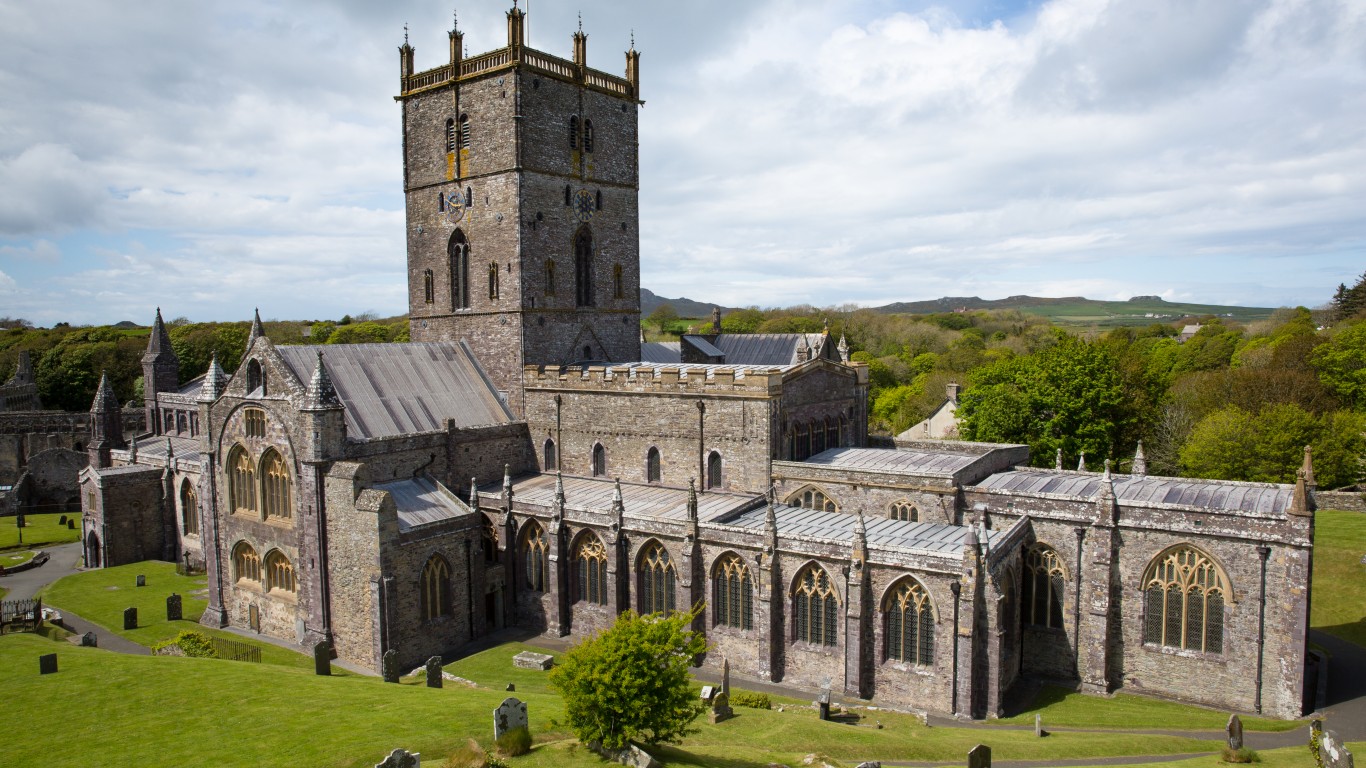
18. St. Davids, (Wales) United Kingdom
> Population: 1,383 (2016)
> Area: 0.23 square miles
St. Davids was named for the patron saint of Wales, who was born nearby. He traveled throughout England and Wales as a missionary, founding a dozen monasteries, including one on the site that became the city of St Davids. Upon his death in 589 A.D., he was buried there. The site took on added importance after David was canonized in 1120. A settlement there called Tyddewi (“David’s House” in Welsh) grew into modern-day St. Davids. It was considered a city according to British custom, beginning in the 16th century, because it was home to a cathedral — build on the site of David’s monastery. It lost city status in 1888 when the city-cathedral link was abolished, but its city status was restored by Queen Elizabeth in 1994. Today it is considered the U.K.’s smallest city.
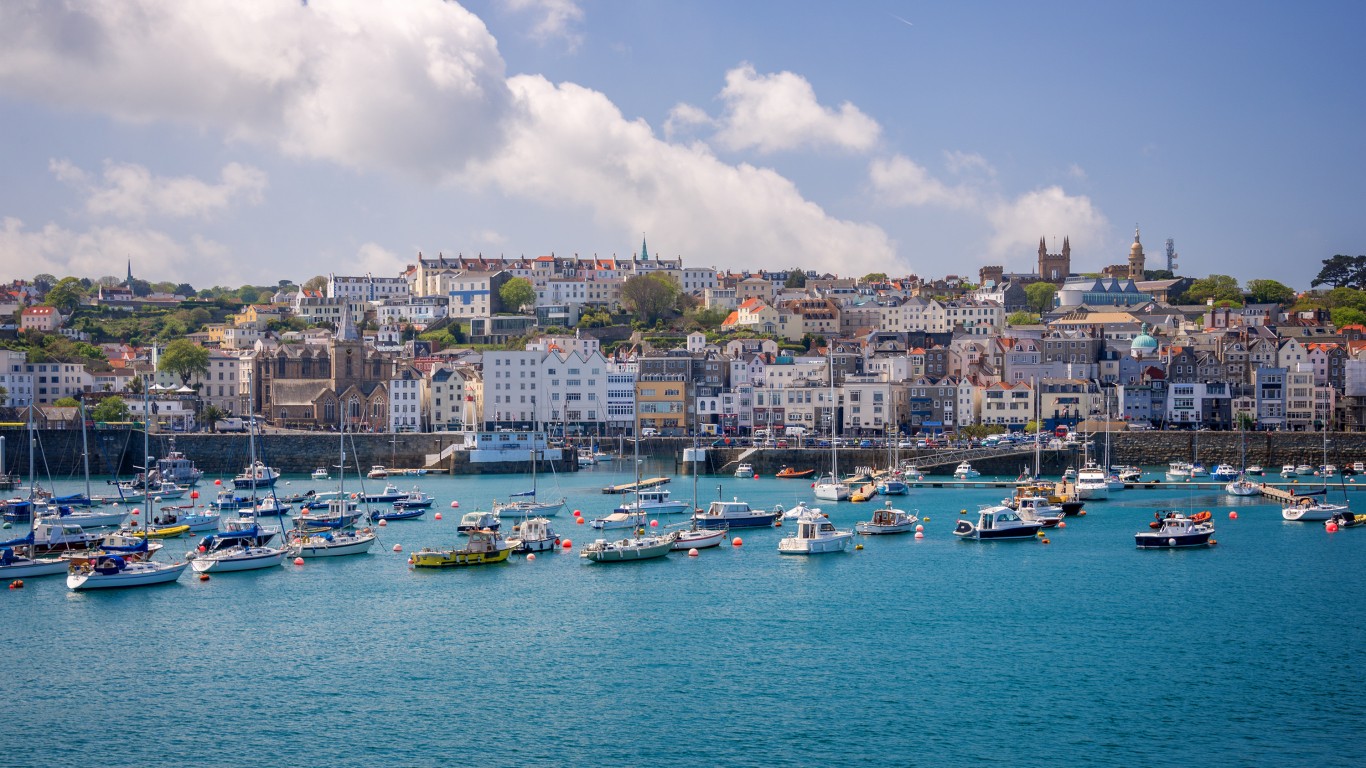
19. St. Peter Port, Guernsey
> Population: 18,694 (2017)
> Area: 2.55 square miles
Guernsey and neighboring Jersey, along with several smaller islands, are Crown dependencies — not officially part of the United Kingdom, but counted among the British Isles. They’re just off the coast of France, however, which lends their larger towns, like Guernsey’s capital, St. Peter Port, a continental flavor. With cafés and tearooms, formal gardens, museums, even the house where Victor Hugo lived for 15 years, this little city draws visitors from both France and the U.K.
[in-text-ad-2]
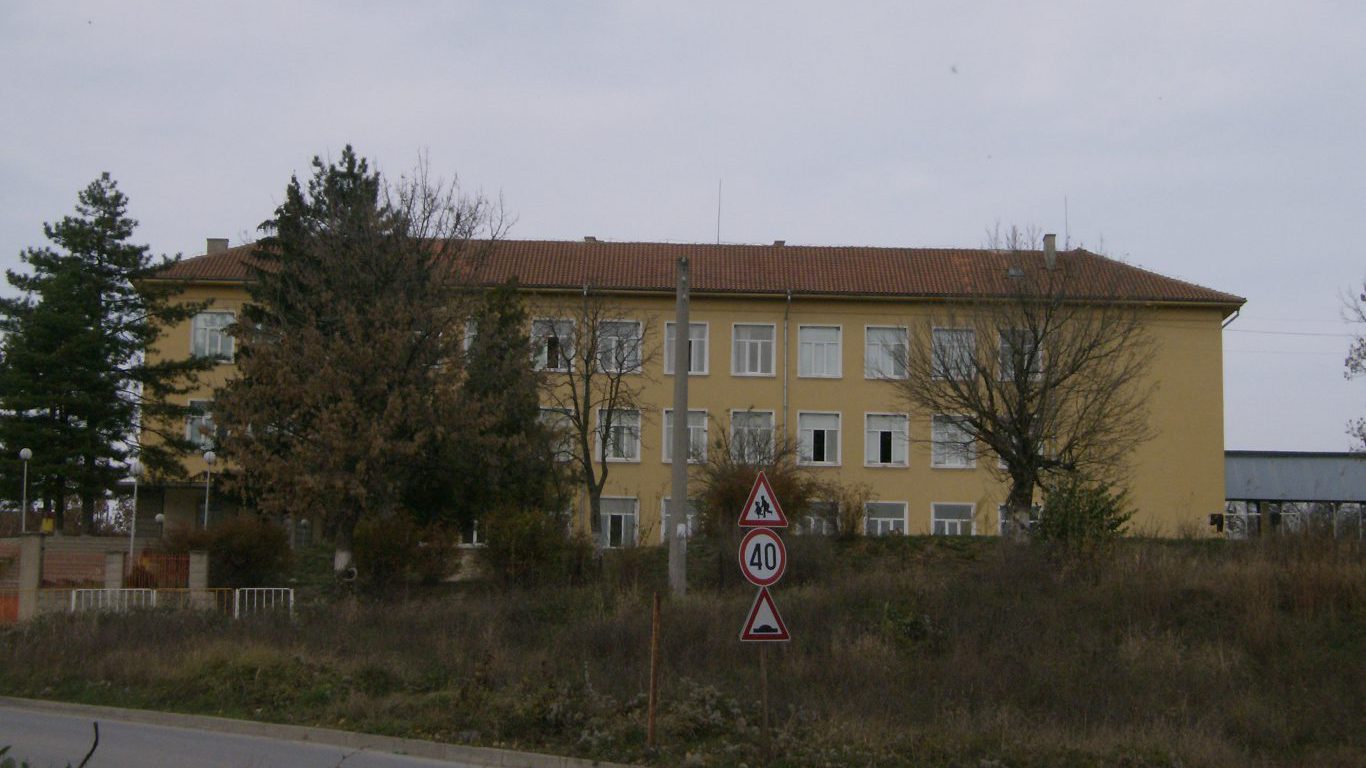
20. Smyadovo, Bulgaria
> Population: 3,586 (2017)
> Area: 37.37 square miles
Designated as a city in 1969, Smyadovo is a non-descript agglomeration itself, but it’s the gateway to some of the most important archeological finds in this part of Europe. These include traces of Greco-Roman culture, a 2,500-year-old necropolis of Thracian origin and other burial mounds, and a Thracian vault from the fourth century B.C.
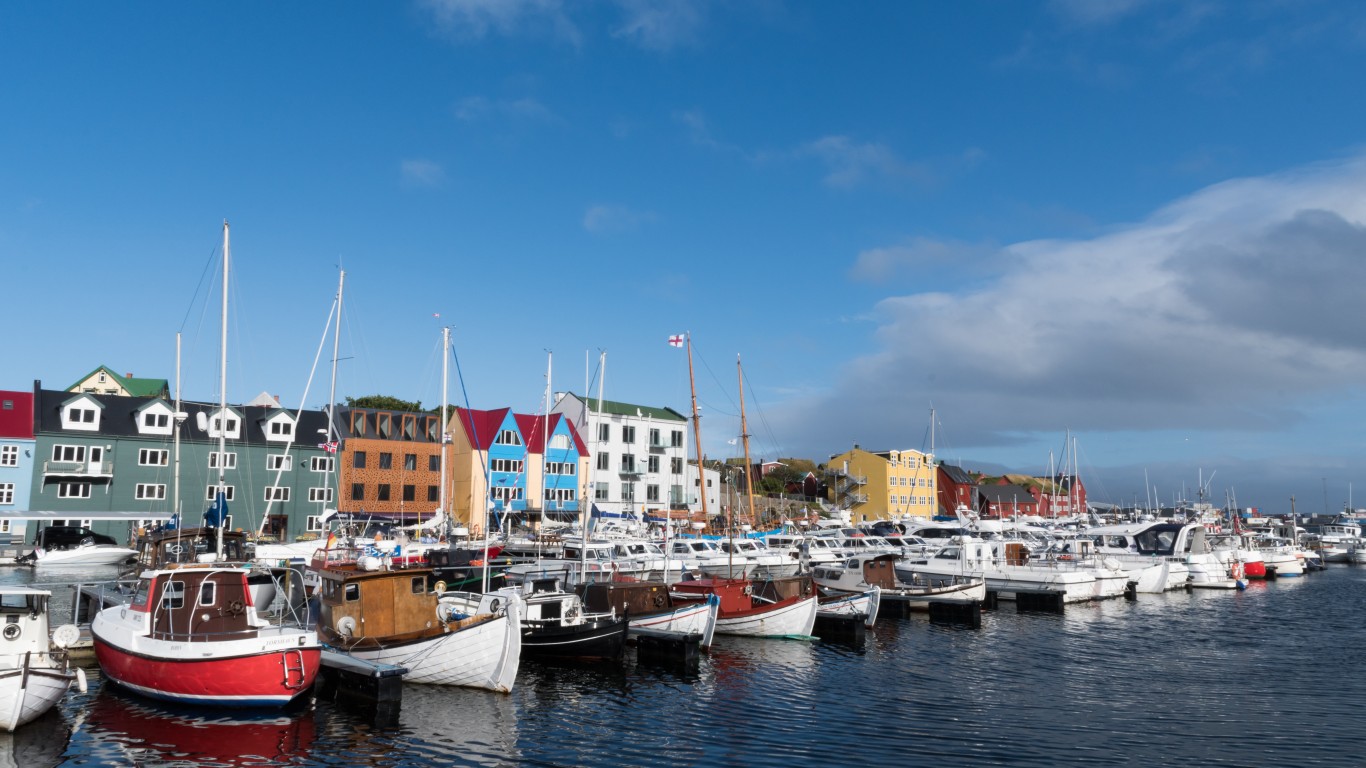
21. Tórshavn, Faroe Islands
> Population: 13,130 (2018)
> Area: 66.67 square miles
The Faroe Islands are a self-governing archipelago under Danish rule, situated in the North Sea roughly equidistant from Iceland, Scotland, and Norway. The capital, Tórshavn — called “Havnin” by locals — is a sprawling waterside city full of shops, restaurants (including one with a Michelin star), schools, and cultural institutions. Its old town is full of turf-roof houses lining narrow lanes, and the 18th-century village of Kvívík, half an hour away, contains the remains of two buildings from the Viking period.
[in-text-ad]
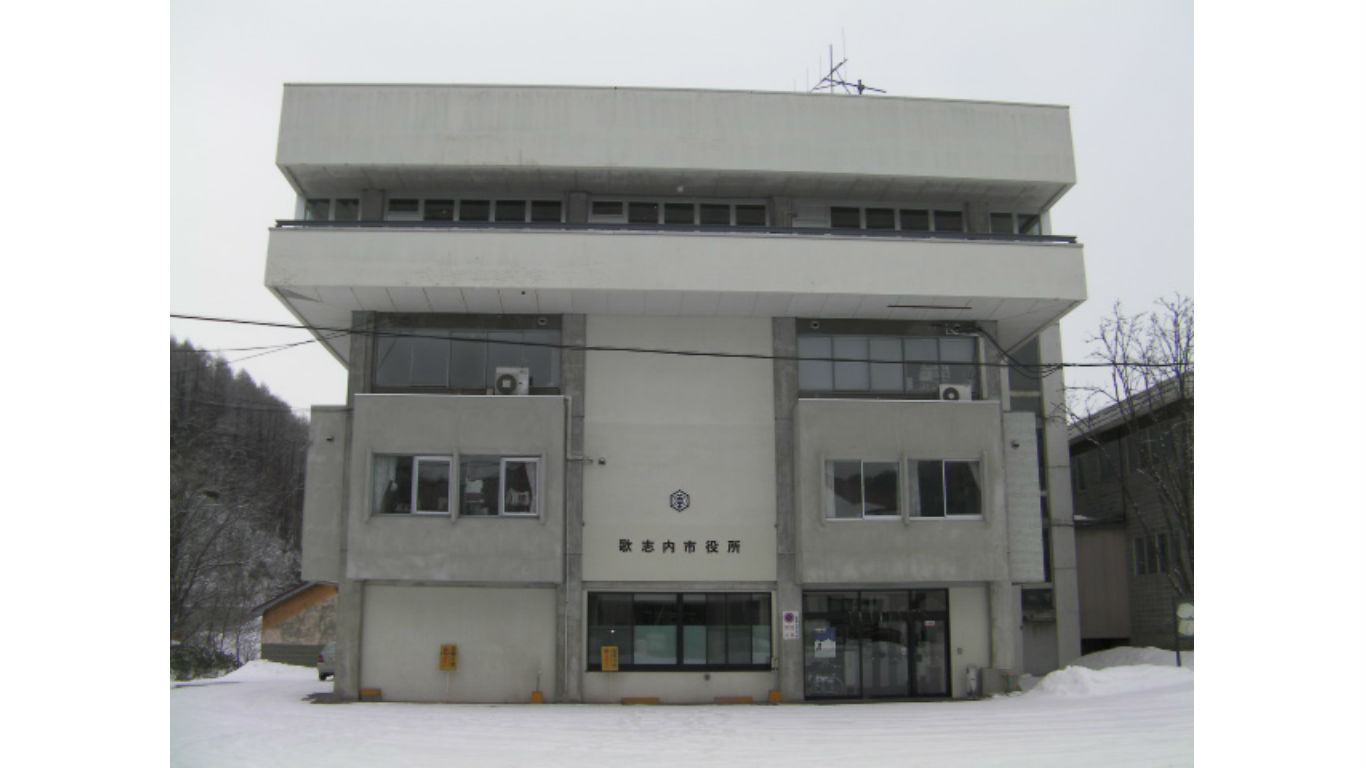
22. Utashinai, Japan
> Population: 3,585 (2015)
> Area: 21.62 square miles
The quasi-Alpine architecture in parts of this otherwise nondescript one-time coal mining town on the island of Hokkaido — considered the smallest city in Japan by some sources — may seem incongruous. But Utashinai has been reinvented as a ski center, near the slopes of Kamoidake Mountain. The city is about 47 miles northeast of Sapporo, where the 1972 Winter Olympics were held, and the whole island of Hokkaido offers many opportunities for skiing and snowboarding.
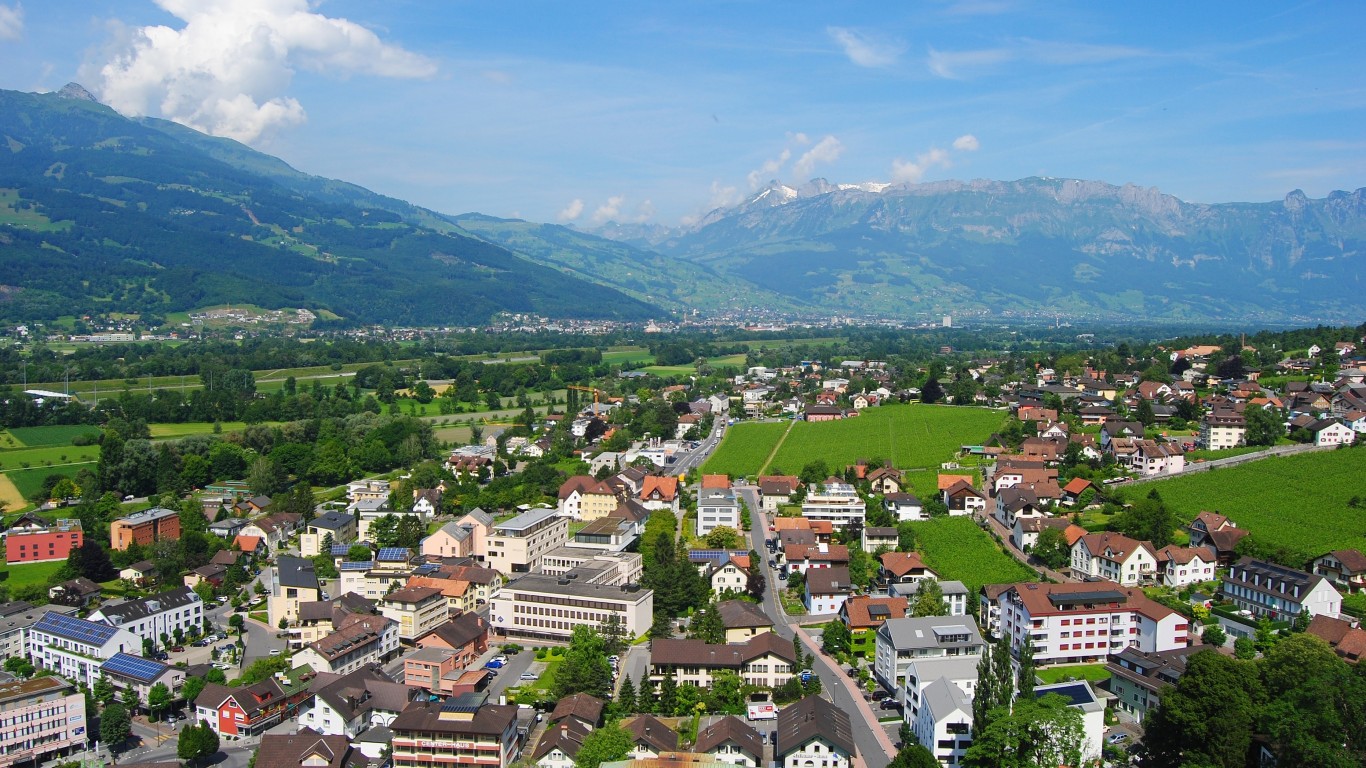
23. Vaduz, Liechtenstein
> Population: 5,521 (2017)
> Area: 6.68 square miles
Wine from local vineyards, skiing, and both a contemporary art museum and a museum of philately (stamp-collecting) are among the attractions in the tiny capital of this tiny principality in the Alps between Austria and Switzerland. The castle of the Prince of Liechtenstein — originally built in the early 14th century, destroyed in 1499, later rebuilt, and finally restored in a 16th-century style in the early 1900s — is the city’s most commanding landmark. Guided tours are available.
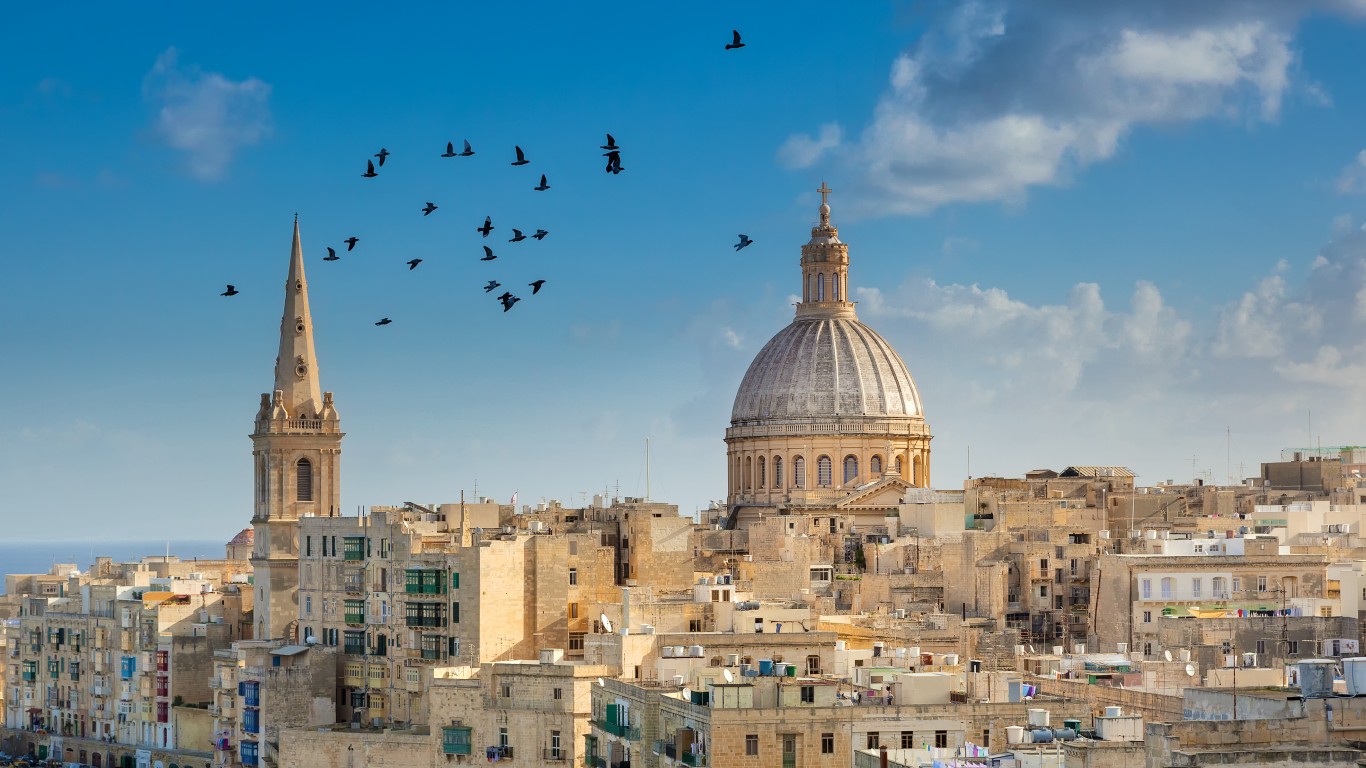
24. Valletta, Malta
> Population: 5,656 (2016)
> Area: 0.32 square miles
Founded by the Knights of St. John in the 16th century as a refuge for pilgrims and soldiers wounded in the Crusades, Valletta is a UNESCO World Heritage site. Considered an open-air museum of Baroque architecture, it is the smallest capital city in the European Union. The organization named it the European Capital of Culture for 2018. Visitors enjoy its many monuments, its hilly stone streets with their brightly colored doors and balconies, and its waterfront cafés.
[in-text-ad-2]
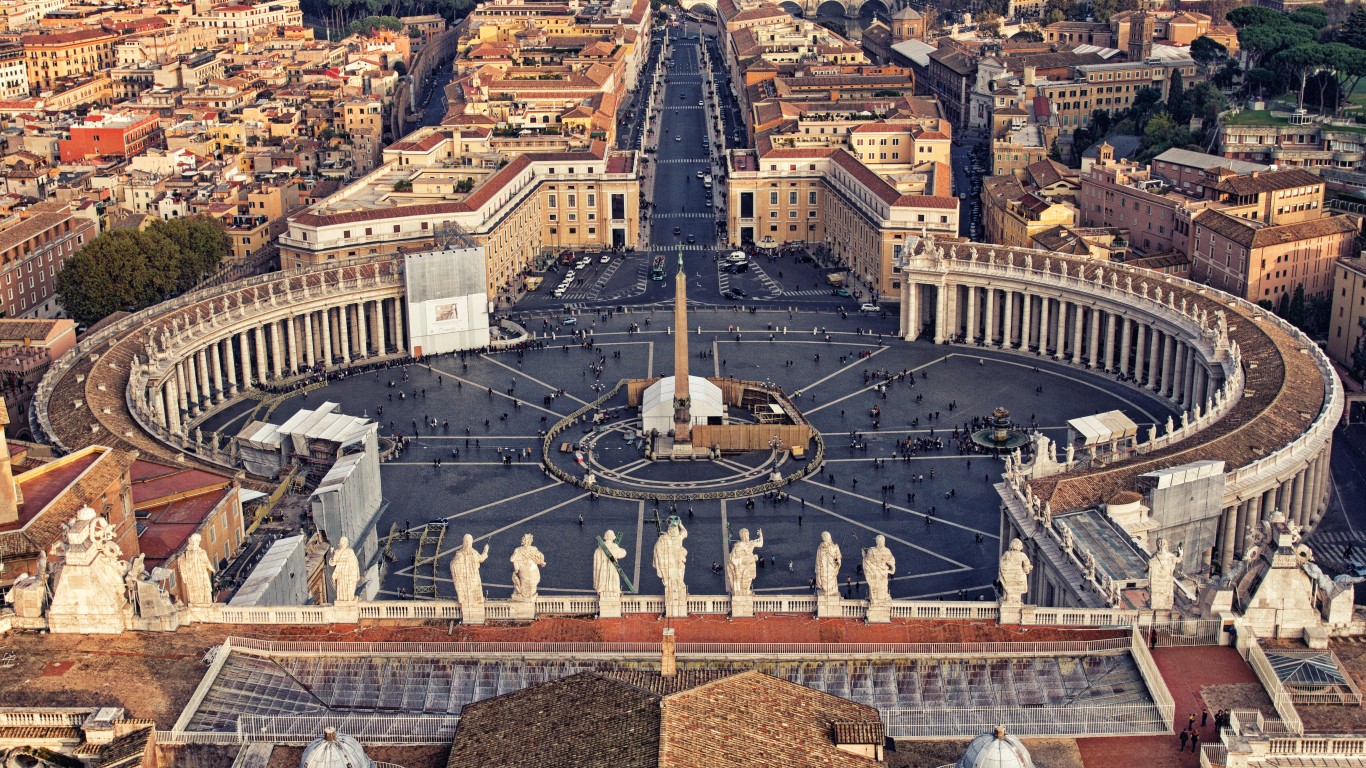
25. Vatican City
> Population: 801 (2018)
> Area: 0.17 square miles
Strictly speaking, Vatican City isn’t a city — it’s a city-state, despite its miniscule size and population. Though St. Peter’s Basilica, the landmark dome that is one of Rome’s most enduring symbols, dates its origins to 324 A.D., and the Vatican walls were completed by 852, Vatican City in its present form was founded only in 1929. The basilica and other monuments, including the celebrated Sistine Chapel with its Michelangelo ceiling, are among Europe’s most popular tourist attractions, welcoming about 7 million visitors annually. Though there are some shops and restaurants in Vatican City, there are many more just across the invisible border with Rome itself.
Are You Ahead, or Behind on Retirement? (sponsor)
If you’re one of the over 4 Million Americans set to retire this year, you may want to pay attention.
Finding a financial advisor who puts your interest first can be the difference between a rich retirement and barely getting by, and today it’s easier than ever. SmartAsset’s free tool matches you with up to three fiduciary financial advisors that serve your area in minutes. Each advisor has been carefully vetted, and must act in your best interests. Start your search now.
Don’t waste another minute; get started right here and help your retirement dreams become a retirement reality.
Thank you for reading! Have some feedback for us?
Contact the 24/7 Wall St. editorial team.




